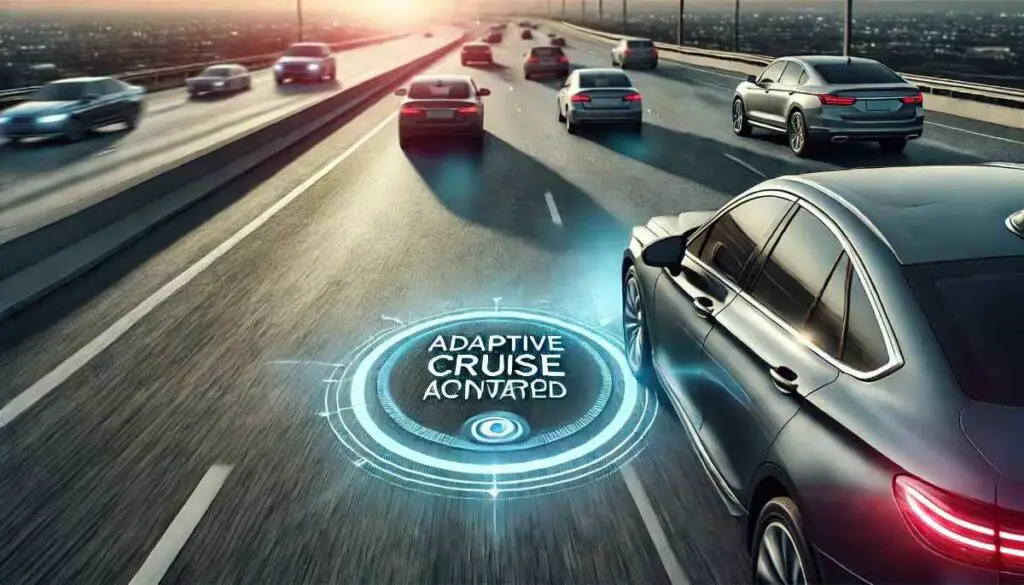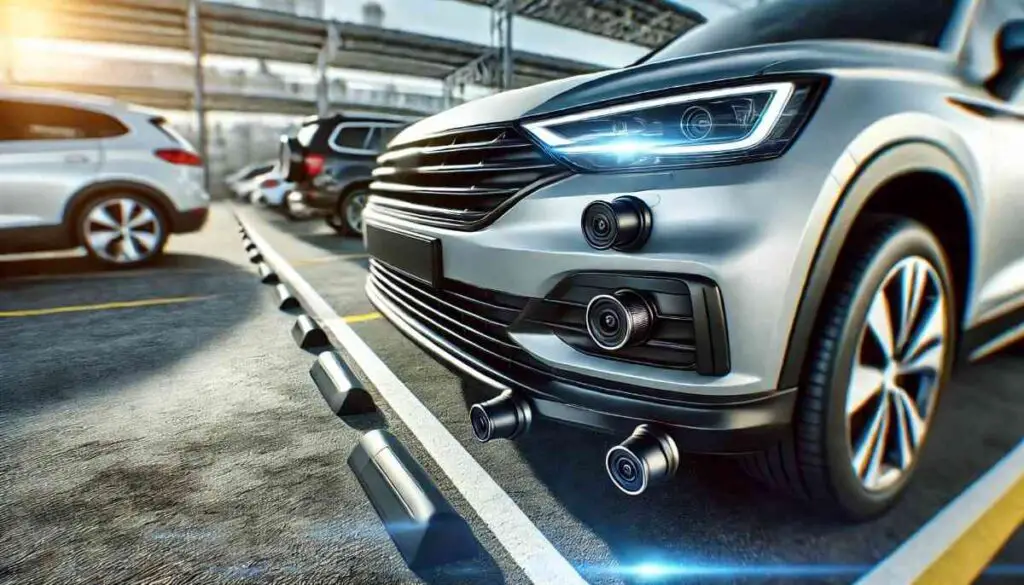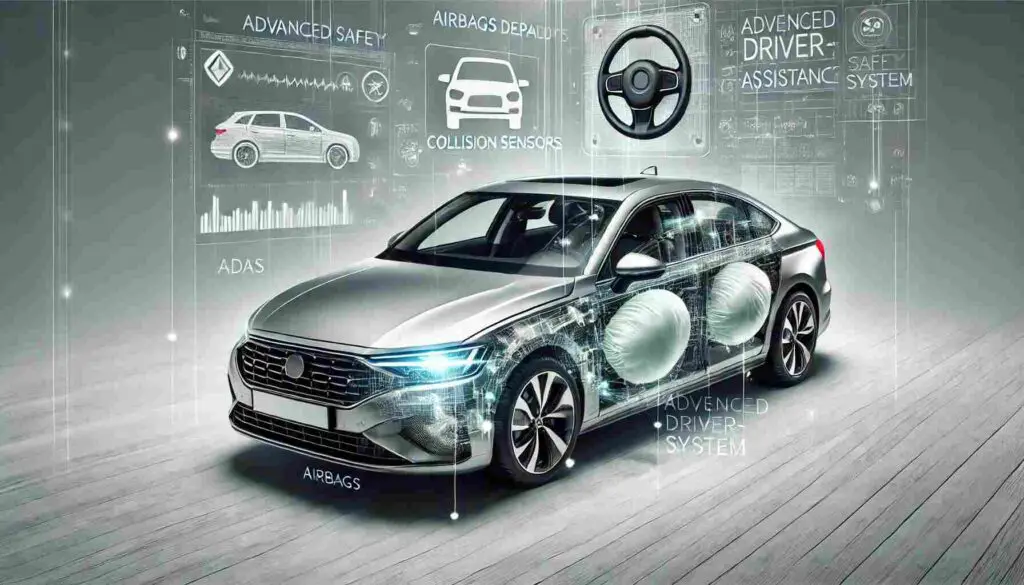Adaptive Cruise Control (ACC) is a revolutionary advancement in automotive technology that aims to enhance safety, convenience, and efficiency on the road. As vehicles continue to evolve towards autonomous driving, ACC plays a pivotal role in shaping the future of transportation. This article delves into the details of Adaptive Cruise Control, from its basic functions to its impact on modern driving.
What is Adaptive Cruise Control (ACC)?
Adaptive Cruise Control (ACC) is an advanced driver assistance system (ADAS) that automatically adjusts a vehicle’s speed to maintain a safe following distance from the car ahead. Unlike traditional cruise control, which only maintains a constant speed, ACC uses a combination of sensors, radar, and cameras to detect vehicles in front and regulate speed accordingly. This technology is designed to enhance the driver’s experience, reduce fatigue, and improve safety, particularly in highway and stop-and-go driving situations.
Key Features of Adaptive Cruise Control
1. Dynamic Speed Adjustment
ACC adjusts the vehicle’s speed based on the distance to the car ahead. If traffic slows down, ACC automatically reduces the car’s speed, and when the road clears, it accelerates back to the set speed.
2. Automatic Braking
Some advanced ACC systems feature automatic emergency braking (AEB), which helps in situations where the driver doesn’t react quickly enough. The system can initiate braking if a collision is imminent.
3. Lane Keeping Assistance
While not present in all ACC systems, many modern versions are integrated with lane-keeping assistance, which ensures the vehicle remains centered in its lane while maintaining a safe distance from surrounding traffic.
How Adaptive Cruise Control Enhances Driver Safety and Convenience
Adaptive Cruise Control significantly enhances safety by reducing human errors and promoting safer driving practices. By automatically maintaining a safe following distance, ACC minimizes the chances of rear-end collisions, a common accident type. It also reduces driver fatigue, especially during long trips, by relieving the constant need for speed adjustment.
The Evolution of Adaptive Cruise Control
Early Development of Cruise Control
Cruise control technology first appeared in the 1950s, with the goal of maintaining a vehicle’s speed without the need for constant throttle input. This early version of cruise control was a breakthrough for long-distance driving, particularly on highways.
Breakthrough to Adaptive Capabilities
The introduction of Adaptive Cruise Control occurred in the 1990s with the advent of radar and sensor technologies. This enabled vehicles to adjust their speed based on traffic conditions, marking a significant improvement over traditional cruise control. Manufacturers like Mercedes-Benz were among the first to integrate this feature into their luxury vehicles.
Key Milestones in ACC Development
-
2000s: First-generation ACC systems introduced, offering basic distance and speed management.
-
2010s: Enhanced systems with stop-and-go functionality, predictive algorithms, and integration with other ADAS features like lane-keeping.
-
2020s: Integration with autonomous driving features, paving the way for fully automated driving systems.
How Does Adaptive Cruise Control Work?
Sensors, Cameras, and Radar Integration
ACC systems rely heavily on various sensors, including radar and cameras, to detect the distance between the vehicle and the one ahead. Radar sensors provide the range, while cameras track the lane markings and other environmental factors. These systems work in tandem to ensure the vehicle adjusts speed smoothly and accurately.
Speed and Distance Regulation
Using the data from the sensors, ACC calculates the optimal speed to maintain a safe following distance. The system continuously monitors traffic conditions and adjusts the speed as necessary to avoid collisions or sudden braking.
Role of Machine Learning in ACC
Modern ACC systems are increasingly incorporating machine learning algorithms, allowing the system to predict traffic patterns, road conditions, and the behavior of other drivers. This predictive capability enhances the system’s responsiveness and efficiency, making it smarter over time.
Types of Adaptive Cruise Control
1. Standard vs. Advanced Adaptive Cruise Control
Standard ACC systems maintain a set distance from the car ahead, but advanced versions take things further. Advanced ACC systems offer features like lane centering, automatic braking, and even partial autonomous driving, making them a step closer to fully autonomous vehicles.
2. Stop-and-Go Adaptive Cruise Control
Stop-and-Go ACC is designed for urban driving and heavy traffic. This system allows the vehicle to come to a complete stop and then resume speed when traffic moves, providing significant relief in congested conditions.
3. Predictive Adaptive Cruise Control
Predictive ACC takes advantage of GPS and real-time traffic data to foresee road conditions and adjust speed accordingly. For example, the system may slow the car down in anticipation of an upcoming curve or traffic light.
Technologies Behind Adaptive Cruise Control
Radar and LIDAR Sensors: The Core of ACC
Radar sensors are essential in ACC systems for detecting objects ahead and measuring the distance. LIDAR, on the other hand, provides high-definition images of the surrounding environment, helping the system to detect smaller objects that radar may miss. Together, these sensors form the backbone of ACC’s object detection and response system.
Camera Systems for Enhanced Visibility
Cameras play a crucial role in lane detection, traffic signal recognition, and vehicle tracking. By processing visual data, these cameras complement the radar and LIDAR systems to create a comprehensive picture of the vehicle’s surroundings.
Data Fusion for Improved Accuracy
Data fusion combines inputs from various sensors—radar, LIDAR, and cameras—into a single, unified data stream. This integration enhances the accuracy and performance of the ACC system, making it more reliable in diverse driving conditions.
Benefits of Adaptive Cruise Control
1. Enhanced Safety
ACC significantly reduces the likelihood of rear-end collisions, one of the most common types of accidents. By maintaining a safe following distance and offering automatic braking, ACC ensures that the vehicle reacts faster than a human driver could.
2. Improved Fuel Efficiency
ACC contributes to better fuel efficiency by optimizing acceleration and deceleration, thus reducing unnecessary fuel consumption. By maintaining a constant speed and avoiding abrupt changes in velocity, the system improves the overall efficiency of the vehicle.
3. Reduced Driver Fatigue
ACC alleviates the stress of constant speed and distance adjustments, particularly during long road trips. This reduction in mental load allows drivers to focus on other aspects of driving, such as navigation and traffic monitoring.
Real-World Applications of Adaptive Cruise Control
1. ACC in Everyday Vehicles
ACC has become a standard feature in many mid-to-high-end vehicles, providing greater convenience for daily commuters and road trip enthusiasts. Manufacturers such as Toyota, BMW, and Audi have integrated ACC in their vehicles to enhance both safety and driving experience.
2. ACC in Commercial Vehicles
In the commercial vehicle sector, ACC is proving to be a game-changer. By enhancing the safety and efficiency of long-haul trucking, ACC helps drivers maintain a consistent distance from other vehicles, reducing accidents and improving traffic flow.
3. The Role of ACC in Autonomous Vehicles
ACC is a critical component in the development of fully autonomous vehicles. By providing advanced speed and distance regulation, ACC systems are integral to creating fully automated driving systems that can operate without human intervention.
The Challenges and Limitations of Adaptive Cruise Control
1. Weather and Environmental Conditions
ACC systems can be affected by adverse weather conditions such as heavy rain, fog, or snow. These conditions can impair sensor visibility, making it difficult for the system to maintain accurate readings. However, many ACC systems are being designed to compensate for these challenges.
2. Complex Traffic Scenarios
ACC struggles in environments with erratic traffic patterns, such as construction zones or cities with unpredictable road layouts. While ACC excels on highways, it may require human intervention in more complex driving situations.
3. Technical Limitations
Despite its capabilities, ACC systems are not foolproof. Sensor limitations, especially in low-visibility conditions, can reduce system reliability. Additionally, ACC systems may still require driver input in certain situations, such as when rapid lane changes are necessary.
The Future of Adaptive Cruise Control
1. Towards Fully Autonomous Vehicles
ACC is a crucial step towards achieving fully autonomous driving. As vehicle manufacturers refine ACC technology, it will seamlessly integrate with other autonomous systems, creating a comprehensive driving experience without human intervention.
2. Innovations in ACC: What’s Next?
Future ACC systems will likely feature enhanced machine learning algorithms, better sensor integration, and improved predictive capabilities. The aim is to create systems that can handle more complex driving scenarios and adapt to ever-changing road conditions.
3. Global Trends in ACC Adoption
The adoption of ACC varies across regions. In Europe and the U.S., ACC is rapidly becoming a standard feature in new cars, while other regions are following suit as the technology becomes more accessible and affordable.
Frequently Asked Questions (FAQs)
1. What vehicles come equipped with adaptive cruise control?
Many modern vehicles, including those from Toyota, BMW, and Audi, offer ACC as either a standard or optional feature.
2. Does adaptive cruise control work in stop-and-go traffic?
Yes, Stop-and-Go ACC is specifically designed to function in traffic conditions where vehicles frequently stop and start.
3. Can ACC prevent accidents on its own?
While ACC significantly reduces the risk of accidents, it cannot prevent all types of collisions. Driver attention is still required.
4. How does ACC affect fuel efficiency?
ACC improves fuel efficiency by maintaining a steady speed and reducing unnecessary acceleration and braking.
Conclusion
Adaptive Cruise Control represents a significant leap forward in automotive safety and convenience. As the technology continues to evolve, it will play a pivotal role in shaping the future of driving, contributing to the development of fully autonomous vehicles and improving road safety worldwide.







